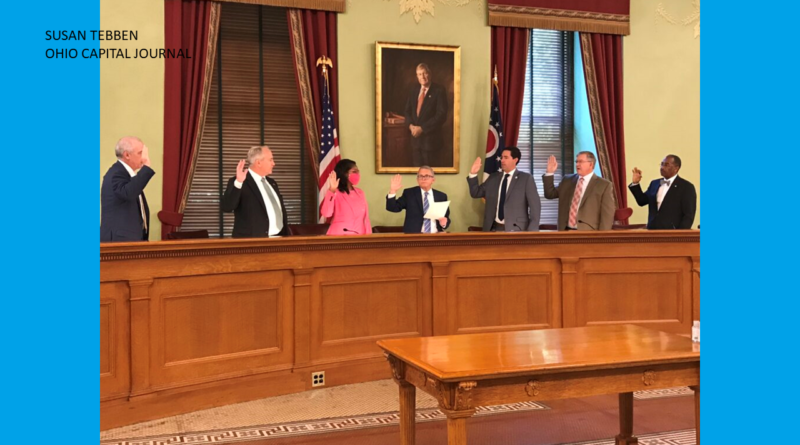Redistricting commission starts work under rushed timeline
This article was written by Susan Tebben and was originally published in the Ohio Capitol Journal.
The Ohio Redistricting Commission had their first meeting Friday without much fanfare, and very little on the agenda, despite a squeezed timeline to get their work done.
Gov. Mike DeWine called the commission, which oversees the redrawing of legislative and Congressional voting districts, to order and announced the appointment of members and transferred the rest of the business to the commission’s co-chairs, House Speaker Bob Cupp and state Sen. Vernon Sykes, D-Akron.
Cupp acknowledged the “tight timeframe” the commission and the legislature has to work with, but said they still plan to hold the constitutionally required public meetings. The dates and times of those public hearings have yet to be decided, Cupp and Sykes said after the commission adjourned.
“We want to hear from them and include them in this matter,” Cupp said.
Cupp said he’s hoping for a bipartisan agreement on the district maps, which would make them effective until the next census in 10 years. If a bipartisan agreement can’t be made, the maps may be approved for four years, meaning the districts will be redrawn again before the next census.
The first deadline to adopt a redistricting plan is September 1 for state legislative districts, and September 30 for Congressional districts. If there is an impasse on the maps, the legislative map deadline can be extended to September 15.
For Congressional district lines, an impasse would result in the commission attempting to adopt a bipartisan plan by October 31. If the commission can’t adopt a plan, the General Assembly gets a shot at it, with a deadline of November 30.
The deadlines were complicated by a delay in receiving the data from the U.S. Census Bureau needed to draw the maps. The Census Bureau recently announced the data would come out a few days earlier than planned, on August 12.
Groups working to get Ohioans engaged in the process say the timeline doesn’t leave a lot of wiggle room, and the fact that nothing was done or scheduled in the first meeting of the commission is not encouraging.
“It’s disappointing that the 18 minutes that we got from this commission just 25 days before our first map deadline and six days before data drops, we got no clear schedule about when they’re going to hear from members of the public about this process,” said Katy Shanahan, of the Equal Districts Coalition and state director of All On the Line Ohio, a group specifically working to end gerrymandering.

